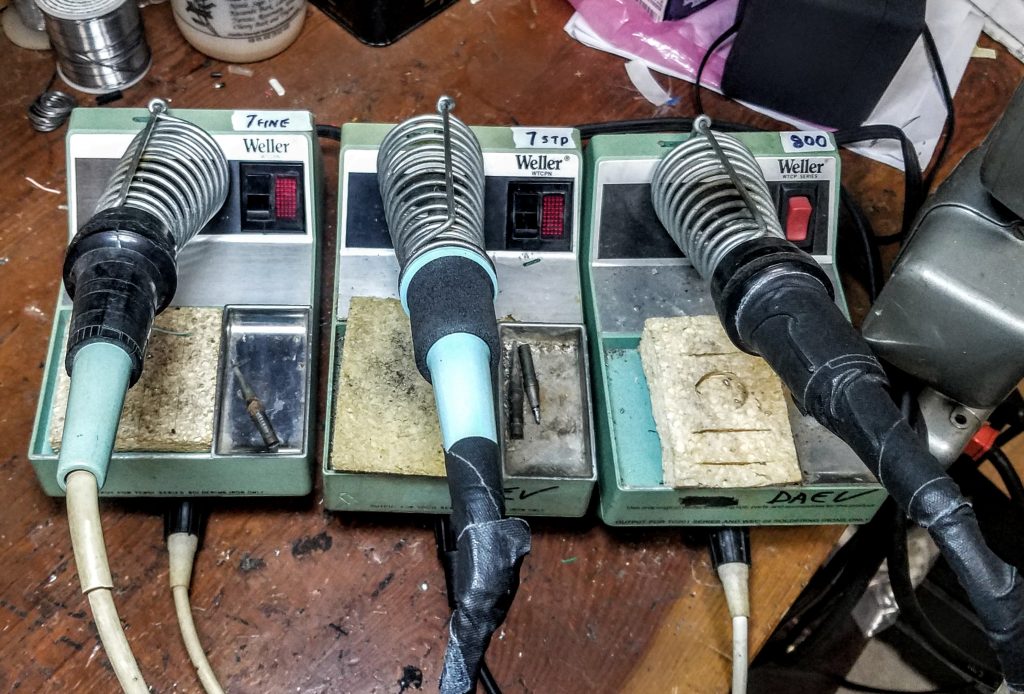Legal disclaimer: This info is based on 50 years of experience with soldering. However, I assume no liability for errors, omissions, burning or blowing up your project or yourself, or your home, or your cat, or any monetary loss or other creative mishap.
I mostly work on vintage vacuum tube and solid state audio equipment (pre RoHS, pre surface mount) so I still use tin/lead solder and vintage soldering stations.
My preferred soldering equipment is a set of Weller WTCP soldering stations. These have been around since the mid 70’s and have proven to be a reliable and durable soldering tool. The WTCP stations have a good temperature regulation system, grounded tips (so static sensitive parts don’t get blasted), they’re easy to maintain and repair, and parts are readily available used on eBay and the like. Tips are still available new and last for decades.
You will likely need a variety of tip sizes and temps based on the task at hand. (I have multiple stations so I don’t have to swap out tips during a project.)
The one on the left has a very fine point 700F tip, the middle has my standard 700F chisel tip, and the right one has a heavy duty 800F tip. These temps and tips handle most of the daily situations I encounter in a project, from soldering 12 gauge wire to tiny pads on PC boards.

Tips on soldering
- SAFETY A: Yes, this is real molten lead, and yes, it occasionally sizzles and pops and goes flying towards your eyes or other body part. A hot blob at 700F / 370C can and will melt through your clothing and skin… and smells really bad while doing it. Use eye protection, don’t wear shorts, wash your hands afterwards, etc. Got that?
- SAFETY B: Never solder on a live circuit. A grounded tip means a short circuit through your iron, and that means sparks, and smoke, and people screaming (usually you), and damaged circuits, and dogs and cats lying down together… You get the idea.
- Solder is not glue. Make a good joint before soldering.
- Soldering requires heat, but heat also melts things and damages small parts. Use heat-sinks and just the right amount of heat. Practice helps here.
- An underpowered or cheapy non regulated iron will damage parts as surely as using a too large iron. That heat thing again…
- Cold joints are a common failure mode, as is using too much solder and causing shorts or blobs.
Last Updated on 2023-02-26 by Daev Roehr
